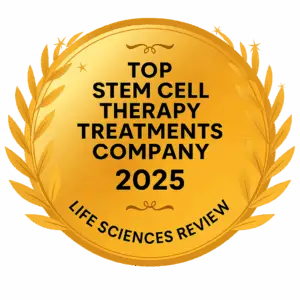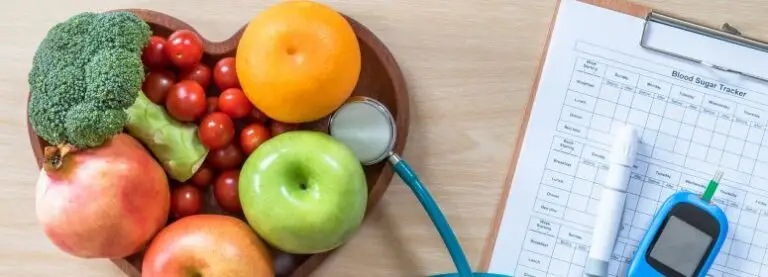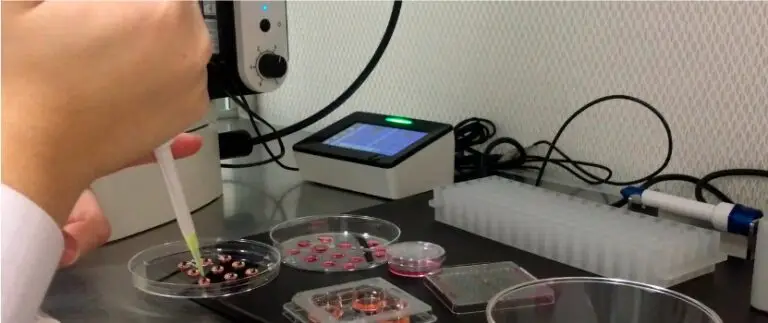Stem Cell Therapy for Big Toe Arthritis (Hallux Rigidus) in Dallas, Texas
Big toe arthritis, medically known as hallux rigidus, causes progressive stiffness, pain, and limited mobility in the joint at the base of the big toe. While many patients manage this condition successfully with conservative treatments like shoe modifications, orthotics, and occasional cortisone injections, some experience severe symptoms that significantly impact their quality of life.
At Innovations Stem Cell Center in Dallas, we offer stem cell therapy as a regenerative alternative to surgery for patients with severe hallux rigidus. However, this treatment represents a significant investment and may not be appropriate for everyone.
Is Stem Cell Therapy Right for Your Big Toe Arthritis?
Stem cell therapy for hallux rigidus costs $12,500 and is not covered by insurance. Before considering this treatment, it’s important to understand whether it makes sense for your specific situation.
This treatment is most appropriate for:
- Active individuals whose big toe arthritis severely limits lifestyle, work, or athletic activities
- Patients who have failed multiple conservative treatments (orthotics, physical therapy, anti-inflammatory medications, cortisone injections)
- Those seeking to avoid fusion surgery (arthrodesis) or joint replacement
- People willing to invest in regenerative medicine rather than ongoing symptom management
- Patients who understand this is a 12-month regeneration process, not an instant fix
You may want to explore other options first if:
- Your symptoms are mild to moderate and manageable with shoe modifications
- You haven’t tried conservative treatments (custom orthotics, physical therapy, lifestyle modifications)
- Cost is a primary concern—traditional podiatric care may be more appropriate
- You require insurance coverage—surgical options through your podiatrist may be preferable
- You’re looking for immediate relief rather than long-term tissue regeneration
Our protocol requires:
- Cash payment of $12,500 (payment plans available through financing)
- Commitment to post-treatment protocol and follow-up appointments
- Realistic expectations about regeneration timeline (significant relief within 36 hours, full regeneration takes 3-12 months)
- Understanding that while many patients achieve excellent results, outcomes vary
If you’re uncertain whether this investment makes sense for your situation, we encourage you to schedule a consultation to discuss your specific case. We’ll help you understand whether stem cell therapy is the right approach or if traditional options might better serve your needs.
Understanding Big Toe Arthritis (Hallux Rigidus)
Hallux rigidus is a degenerative arthritis condition affecting the metatarsophalangeal (MTP) joint—where your big toe connects to the foot. This joint bears substantial weight during walking, running, and standing, making arthritis in this area particularly debilitating.
What Happens in Hallux Rigidus:
The cartilage that cushions the joint gradually wears away, causing bone-on-bone contact. The body responds by forming bone spurs (osteophytes) around the joint, further limiting motion. The term “rigidus” reflects the progressive stiffness that characterizes this condition—the joint literally becomes rigid.
Stages of Hallux Rigidus:
Grade 1 (Early): Mild pain and stiffness, minimal bone spur formation, good range of motion maintained
Grade 2 (Moderate): Increased pain with activity, visible bone spurs on X-ray, noticeable loss of dorsiflexion (upward bending of toe)
Grade 3 (Advanced): Severe stiffness, significant bone spurs, substantial loss of motion, constant pain even at rest
Grade 4 (Severe): Complete joint destruction, bone-on-bone contact, minimal to no movement, chronic pain
Stem cell therapy is most effective for Grades 2-3, where significant cartilage damage exists but the joint isn’t completely destroyed. Grade 4 cases may require surgical intervention.
Symptoms of Big Toe Arthritis
The hallmark symptom of hallux rigidus is progressive stiffness in the big toe joint, but patients experience a range of symptoms:
Pain and Discomfort:
- Pain at the base of the big toe during activity (walking, running, climbing stairs)
- Throbbing pain after extended periods on your feet
- Sharp pain when bending the toe upward (dorsiflexion)
- Aching in the joint that worsens with cold or damp weather
- Burning sensation around the joint
Mechanical Symptoms:
- Significant stiffness, especially in the morning or after periods of rest
- Difficulty bending the toe upward (essential for normal walking)
- Grinding or catching sensation in the joint (crepitus)
- Altered gait pattern—walking on the outside of your foot to avoid bending the toe
- Difficulty wearing certain shoes, particularly those with elevation (heels)
Visible Changes:
- Swelling and inflammation around the joint
- Visible bump on top of the foot (dorsal bone spur)
- Redness and warmth during flare-ups
- Calluses forming on the ball of the foot or under the big toe (from altered walking pattern)
Functional Limitations:
- Difficulty with activities requiring toe flexibility (running, squatting, kneeling)
- Problems with athletic activities (tennis, basketball, dancing)
- Challenges wearing dress shoes or athletic footwear
- Compensatory problems in ankle, knee, or hip from altered gait
These symptoms typically develop gradually over years, though some patients experience rapid progression. Pain and stiffness that significantly impact daily activities or quality of life warrant consideration of regenerative treatment options.
Traditional Treatments for Big Toe Arthritis and Their Limitations
Most patients with hallux rigidus begin with conservative management, which successfully controls symptoms for many people, particularly in early stages.
Conservative Treatments:
Shoe Modifications Wearing shoes with a stiff sole and roomy toe box reduces stress on the joint. Rocker-bottom shoes can help by minimizing toe bending during walking. Many patients find relief with appropriate footwear, though this limits shoe choices significantly.
Custom Orthotics Prescription orthotics with Morton’s extension (rigid support under the big toe) can reduce joint motion and decrease pain. While effective for some patients, orthotics manage symptoms rather than address underlying degeneration.
Medications NSAIDs like ibuprofen reduce inflammation and pain but require ongoing use and risk gastrointestinal, cardiovascular, and kidney complications with long-term use. They don’t slow disease progression.
Cortisone Injections Corticosteroid injections into the joint provide temporary relief, typically lasting 6 weeks to 6 months. However, repeated injections can accelerate cartilage breakdown and weaken surrounding structures. Most physicians limit injections to 3-4 per year.
Physical Therapy Mobilization techniques, therapeutic exercises, and modalities like ultrasound can improve range of motion and reduce pain. Benefits are usually modest and temporary, though physical therapy remains a reasonable first-line approach.
Surgical Options:
When conservative treatments fail, surgery becomes the traditional recommendation:
Cheilectomy (Bone Spur Removal) Surgical removal of bone spurs and damaged cartilage. Success rates decline over time as arthritis progresses. Recovery takes 6-8 weeks. Cost: $8,000-15,000 with insurance coverage.
Joint Fusion (Arthrodesis) The MTP joint is permanently fused, eliminating pain but also eliminating all motion. Walking patterns change permanently. This is considered the “gold standard” for advanced cases but significantly alters biomechanics. Recovery takes 3-6 months. Cost: $10,000-20,000.
Joint Replacement (Arthroplasty) Artificial joint replacement, though less commonly performed for the big toe than hip or knee. Implants may loosen or fail over time, requiring revision surgery. Recovery takes 3-4 months. Cost: $15,000-25,000.
The Problem: Conservative treatments provide temporary symptom relief without addressing cartilage degeneration. Surgery either removes motion permanently (fusion) or introduces hardware with potential complications (replacement). Neither approach regenerates damaged tissue or restores natural joint function.
How Stem Cell Therapy Works for Big Toe Arthritis
Stem cell therapy for hallux rigidus represents a fundamentally different approach—regenerating damaged cartilage and reducing chronic inflammation rather than merely managing symptoms or surgically altering the joint.
The Science Behind Regenerative Treatment:
Adipose-derived stem cells (obtained from your own fat tissue) possess unique regenerative properties:
Cartilage Regeneration Stem cells can differentiate into chondrocytes—the cells that produce cartilage. When injected into the arthritic joint, they receive biochemical signals from damaged tissue and begin regenerating lost cartilage matrix. This process continues for 6-12 months post-treatment.
Powerful Anti-Inflammatory Effects Stem cells secrete growth factors and cytokines that actively shut down inflammatory pathways at the cellular level. Within 36 hours, most patients experience dramatic reduction in pain and swelling as these anti-inflammatory factors take effect.
Improved Joint Mechanics As cartilage regenerates and inflammation decreases, joint mechanics improve. The toe regains some dorsiflexion (upward bending), bone spurs may reduce in size, and the joint glides more smoothly. Patients often report improved gait and reduced compensatory pain in ankles, knees, and hips.
Long-Term Disease Modification Unlike treatments that merely mask symptoms, stem cells address the underlying degenerative process. By regenerating cartilage and establishing a healthier joint environment, stem cell therapy may slow or halt disease progression.
The Innovations Stem Cell Center Stem Cell Procedure
Our procedure has been refined over 12+ years and thousands of procedures to maximize effectiveness while minimizing invasiveness.
Step 1: Comprehensive Consultation
We review your medical history, X-rays or MRI images, previous treatments, and current symptoms. We discuss realistic expectations—stem cell therapy works best for Grades 2-3 hallux rigidus where significant cartilage damage exists but the joint isn’t completely destroyed. We’ll honestly assess whether you’re a good candidate.
Step 2: Fat Harvest (3 Minutes)
Using only local anesthesia, we harvest 50cc of adipose tissue (approximately 3 tablespoons) from your abdomen or flanks. This is significantly less invasive than protocols requiring larger harvests. The procedure takes just 3 minutes and causes minimal discomfort—most patients describe it as “less painful than expected.”
Step 3: Cell Processing (2.5 Hours)
While you relax in our comfortable Dallas facility, your adipose tissue undergoes processing in our FDA-compliant laboratory. We isolate and concentrate the stromal vascular fraction (SVF), which contains your stem cells, growth factors, and regenerative proteins.
Our processing yields an average of 100 million viable stem cells, verified by cell counter. This high cell count—achieved from a minimal fat harvest—demonstrates our laboratory expertise and ensures therapeutic effectiveness.
Step 4: Intravenous Administration
At least 50% of your stem cells are administered through IV infusion. This systemic delivery provides anti-inflammatory benefits throughout your body, often improving other areas of chronic pain patients didn’t even mention. The IV infusion takes about 20 minutes.
Step 5: Joint Injection
The remaining stem cells are injected precisely into the MTP joint using ultrasound or fluoroscopic guidance. This ensures accurate placement directly where cartilage regeneration is needed. Some patients also receive injection into surrounding inflamed soft tissues.
Total Appointment Time: 3-4 hours including all steps. You can drive yourself home and resume light activities immediately. No general anesthesia, no hospital stay, no lengthy recovery period.
Recovery and Results Timeline
Within 36 Hours: Dramatic Anti-Inflammatory Response
Most patients experience significant reduction in pain and swelling within the first 1-2 days. This happens because stem cells immediately produce anti-inflammatory growth factors that shut down inflammatory pathways at the cellular level. The “throbbing” quality of arthritic pain often disappears first. Many patients report this is when they first feel genuine hope after years of declining function.
Weeks 1-4: Continued Symptom Improvement
Pain continues to decrease, and stiffness gradually improves. Many patients notice they’re walking more normally—no longer avoiding bending the toe or walking on the outside of their foot. Swelling around the joint diminishes. You may be able to wear shoes that were previously too painful.
Month 3: Tissue Regeneration Begins
This is when the real transformation starts. Your stem cells have received instructions from damaged tissue and begin actively differentiating into cartilage cells and generating new cartilage matrix. The regeneration phase officially launches. Some patients have follow-up imaging showing early signs of cartilage restoration.
Months 3-12: Progressive Healing
Active cartilage regeneration and joint remodeling continue throughout this period. Patients typically report:
- Sustained reduction in pain, even with increased activity
- Improved range of motion in the big toe
- Ability to participate in activities previously too painful (running, hiking, dancing)
- Normalized gait pattern—no more compensatory walking
- Reduced or eliminated need for pain medications
- Improved shoe choices—can wear athletic shoes, dress shoes comfortably
12+ Months: Lasting Results
For most patients, improvements plateau around 12 months and remain stable long-term. The regenerated cartilage provides lasting cushioning and improved joint mechanics. Many patients remain significantly improved years post-treatment.
Second Treatments: If additional cartilage regeneration is needed after the initial 12-month period, we offer discounted second treatments at $5,000. However, many hallux rigidus patients achieve their functional goals with a single treatment, particularly those in Grade 2-3.
Who Is a Good Candidate for Stem Cell Therapy?
Not every patient with big toe arthritis requires or benefits from stem cell therapy. The best candidates share certain characteristics:
Ideal Candidates:
Severity:
- Grade 2-3 hallux rigidus (moderate to advanced arthritis with cartilage damage but joint space still visible on X-ray)
- Significant functional limitations affecting work, lifestyle, or athletic activities
- Pain despite appropriate conservative management
Treatment History:
- Failed conservative treatments (custom orthotics, physical therapy, anti-inflammatory medications)
- Tried cortisone injections with diminishing returns or unacceptable side effects
- Want to avoid or delay fusion surgery
Goals:
- Seeking cartilage regeneration and disease modification, not just symptom management
- Want to maintain natural joint motion rather than undergo fusion
- Prefer a regenerative approach over ongoing medications or repeated injections
- Understand the 3-12 month regeneration timeline and commit to the process
Medical Status:
- Medically stable enough for minor surgery under local anesthesia
- Not taking anticoagulants, or able to stop them briefly with physician approval
- No active infections or uncontrolled medical conditions
- Realistic expectations about outcomes and timeline
Financial Readiness:
- Able to invest $12,500 in regenerative treatment
- Understand this is not covered by insurance
- View this as a long-term investment in joint health and quality of life
Not Ideal Candidates:
- Grade 4 (end-stage) hallux rigidus with complete joint destruction—these patients typically require surgery
- Active infection in the joint or surrounding tissues
- Severe osteoporosis or conditions affecting bone health
- Unrealistic expectations of immediate “cure” or guaranteed outcomes
- Primarily motivated by cost savings compared to surgery—this is an investment in regeneration, not a budget alternative
During your consultation, we’ll evaluate X-rays or MRI images, assess your specific anatomy and disease severity, review your treatment history, and honestly discuss whether stem cell therapy is appropriate for your case. We turn away patients who aren’t good candidates rather than perform procedures unlikely to provide significant benefit.
Cost and Investment Considerations
The cost for stem cell therapy for hallux rigidus is $12,500, which includes:
- Comprehensive consultation and imaging review
- Fat harvest procedure with local anesthesia (50cc harvest)
- Stem cell processing in our FDA-compliant laboratory with verified cell count (average 100 million cells)
- Intravenous stem cell administration (systemic anti-inflammatory benefits)
- Ultrasound-guided joint injection (precise placement)
- All follow-up appointments to monitor progress
Why This Investment May Make Sense:
Compare to Surgical Alternatives:
- Cheilectomy (bone spur removal): $8,000-15,000 with insurance, but success rates decline over time as arthritis progresses
- Joint fusion: $10,000-20,000, plus lost wages during 3-6 month recovery, and permanent loss of toe motion
- Joint replacement: $15,000-25,000, with potential for revision surgery if implant fails
Beyond Direct Cost Comparison:
- Maintains natural joint motion (fusion eliminates all motion permanently)
- Minimal recovery time—return to work in days, not months
- Addresses the underlying cartilage degeneration rather than just removing damaged tissue
- Potential to delay or avoid surgery entirely
- Systemic anti-inflammatory benefits often improve other areas of chronic pain
Consider the Long-Term Value: If stem cell therapy provides 5-10 years of improved function and pain relief (many patients experience longer benefits), and delays or eliminates the need for fusion surgery, the cost averages $1,250-2,500 per year. Many patients find this represents excellent value for maintaining their active lifestyle and avoiding surgical complications.
Financing Options: We offer financing through third-party medical lenders with flexible payment plans. This allows you to invest in regenerative treatment while managing cash flow.
Second Treatment Discount: If additional cartilage regeneration is needed after 12 months, second treatments are available at a reduced rate of $5,000. However, many patients with hallux rigidus achieve satisfactory results with a single treatment.
Is This Investment Right for You?
For patients whose big toe arthritis significantly impacts their quality of life, limits their activities, or threatens their independence, stem cell therapy represents a potentially valuable investment in long-term joint health and function. For those with mild symptoms adequately managed with conservative care, or for whom cost is prohibitive, traditional podiatric management may be more appropriate.
We encourage you to schedule a consultation to discuss whether stem cell therapy aligns with your goals, expectations, and financial situation. We’re committed to helping you make an informed decision about your joint health.
Why Choose Innovations Stem Cell Center for Big Toe Arthritis Treatment?
Featured On Many News Stations for 12+ Years

12+ Years of Regenerative Medicine Experience
Since 2013, Dr. Bill Johnson has performed thousands of stem cell procedures, making Innovations Stem Cell Center one of the most experienced regenerative medicine practices in North Texas. As the first Cell Surgical Network member in the Dallas area, we have access to the latest protocols and research in regenerative medicine.
Minimal Harvest, Maximum Cell Yield
Our refined technique harvests only 50cc of fat tissue (approximately 3 tablespoons) in just 3 minutes. Despite this minimal harvest, our laboratory processing consistently yields an average of 100 million viable stem cells—verified by cell counter. Many protocols require larger, more invasive harvests to achieve similar cell counts. Our efficiency demonstrates our laboratory expertise.
Dual-Delivery Protocol
We’re one of the few practices using both intravenous and local injection delivery. IV administration provides systemic anti-inflammatory benefits throughout your body, while precise joint injection delivers concentrated cells exactly where cartilage regeneration is needed. This comprehensive approach optimizes results.
Awake Procedure, Local Anesthesia Only
Dr. Johnson specializes in performing procedures under local anesthesia, eliminating risks and costs associated with general anesthesia or sedation. You remain awake and comfortable throughout the procedure, can drive yourself home, and resume activities immediately.
FDA-Compliant Processing
Our laboratory follows all FDA guidelines for same-day tissue processing. We use closed-system, point-of-care processing that meets regulatory requirements while maximizing cell viability and potency.
Honest Candidacy Assessment
We turn away patients who aren’t good candidates rather than performing procedures unlikely to provide significant benefit. During your consultation, we’ll honestly assess whether stem cell therapy is appropriate for your specific case or if other options better serve your needs.
Dallas Location Serving North Texas
Conveniently located at 12660 Coit Rd in Dallas, we serve patients throughout the DFW metroplex including Highland Park, University Park, Plano, Frisco, McKinney, and surrounding communities.
Frequently Asked Questions About Stem Cell Therapy for Big Toe Arthritis
Will stem cell therapy cure my hallux rigidus?
We cannot guarantee a “cure,” but many patients experience substantial, lasting improvement in pain and function. Stem cell therapy aims to regenerate cartilage and reduce chronic inflammation—addressing the underlying problem rather than just managing symptoms. Outcomes vary based on disease severity, individual healing capacity, and adherence to post-treatment protocols. During consultation, we’ll discuss realistic expectations for your specific case.
How long do results last?
Most patients maintain significant improvements for years following treatment. The regenerated cartilage provides lasting cushioning and improved joint mechanics. Some patients remain substantially improved 5-10+ years post-treatment. If additional cartilage regeneration is needed in the future, second treatments are available at a discounted rate ($5,000).
Is the procedure painful?
Most patients report minimal discomfort. We use local anesthesia for both the fat harvest and joint injection. The fat harvest takes just 3 minutes and is typically described as “less painful than expected.” The joint injection causes brief pressure but isn’t severely painful. Some patients experience mild soreness for 1-2 days afterward, easily managed with ice and over-the-counter pain relievers.
Can I drive myself to and from the appointment?
Yes! Because we use only local anesthesia with no sedation, you can safely drive yourself to and from your appointment. Plan for approximately 3-4 hours total appointment time.
What’s the recovery like?
Recovery is minimal compared to surgery. You can walk immediately and resume light activities the same day. Most patients return to work within 1-3 days. We recommend avoiding high-impact activities (running, jumping) for 2-4 weeks to allow initial healing. The joint may feel somewhat stiff or sore for the first week, but this typically resolves quickly.
Will my insurance cover this?
Stem cell therapy is typically not covered by insurance as it’s considered an elective regenerative procedure. The $12,500 cost is a cash payment. We can provide documentation for HSA/FSA reimbursement, and we offer financing through third-party medical lenders.
How does this compare to cortisone injections?
Cortisone provides temporary symptom relief (6 weeks to 6 months) by reducing inflammation, but doesn’t heal damaged cartilage and may actually accelerate degeneration with repeated use. Stem cell therapy aims to regenerate cartilage and provide lasting improvement. Initial results appear within days (anti-inflammatory effects), with progressive cartilage regeneration occurring over 3-12 months.
What if I’ve already had surgery on my big toe?
Previous surgery doesn’t automatically disqualify you from stem cell therapy. We’ve successfully treated patients who had prior cheilectomy (bone spur removal) or other procedures. However, if you’ve had fusion surgery, the joint is permanently fused and stem cell therapy cannot restore motion. Bring your surgical records and imaging to your consultation for evaluation.
Can stem cell therapy help if I have bone spurs?
Yes. While stem cells don’t dissolve existing bone spurs, they can reduce the inflammation around spurs, regenerate cartilage in areas not covered by spurs, and improve overall joint mechanics. Some patients report that as joint function improves and inflammation decreases, bone spurs become less symptomatic. In some cases, spurs may partially remodel over time as joint mechanics improve.
How many treatments will I need?
Most hallux rigidus patients achieve their functional goals with a single treatment, particularly those with Grade 2-3 disease. If additional cartilage regeneration is needed after the initial 12-month regeneration period, second treatments are available at $5,000. We’ll assess your response at follow-up appointments and discuss whether additional treatment might be beneficial.
What if I have arthritis in both big toes?
We can treat both joints during a single procedure. The fat harvest remains the same (50cc total), and we divide the stem cells between both joints. Some patients choose to treat both sides simultaneously, while others prefer to treat one side, evaluate the response, and then treat the second side if needed.
Can I still get stem cell therapy if I’m overweight?
Yes. In fact, having adequate adipose tissue is beneficial—it’s our source of stem cells. Obesity does increase arthritis risk and may affect outcomes, but it doesn’t disqualify you from treatment. We’ll discuss lifestyle factors that support optimal healing during your consultation.
What’s your success rate for big toe arthritis?
Success rates vary based on disease severity, individual healing capacity, and definition of “success.” Many Grade 2-3 patients experience significant improvement in pain and function. Grade 4 (end-stage) patients typically have more modest outcomes and may ultimately require surgical intervention. We’ll review realistic expectations for your specific grade of arthritis during consultation.
Schedule Your Consultation for Big Toe Arthritis Treatment
If you’re suffering from big toe arthritis that significantly impacts your quality of life, and you’ve exhausted conservative treatment options, stem cell therapy may offer a regenerative alternative to fusion surgery.
During your consultation, we’ll:
- Review your X-rays or MRI images to assess disease severity
- Discuss your treatment history and current symptoms
- Explain our stem cell protocol in detail
- Honestly assess whether you’re a good candidate
- Discuss realistic expectations, timeline, and costs
- Answer all your questions
- Help you decide if stem cell therapy aligns with your goals
Please come prepared with:
- Recent X-rays or MRI of your foot (within past 6 months preferred)
- List of previous treatments you’ve tried
- Current medications
- Understanding that this is a significant investment requiring commitment to the regeneration process
Important: This consultation is an opportunity to determine if stem cell therapy is right for you. If we believe conservative management is more appropriate, or if your arthritis is too advanced for regenerative treatment, we’ll tell you honestly. Our goal is to help you make the best decision for your joint health, whether that includes stem cell therapy or not.
Call (214) 643-8665 or schedule your consultation online today.
For more information about the procedure, see our blogs:





